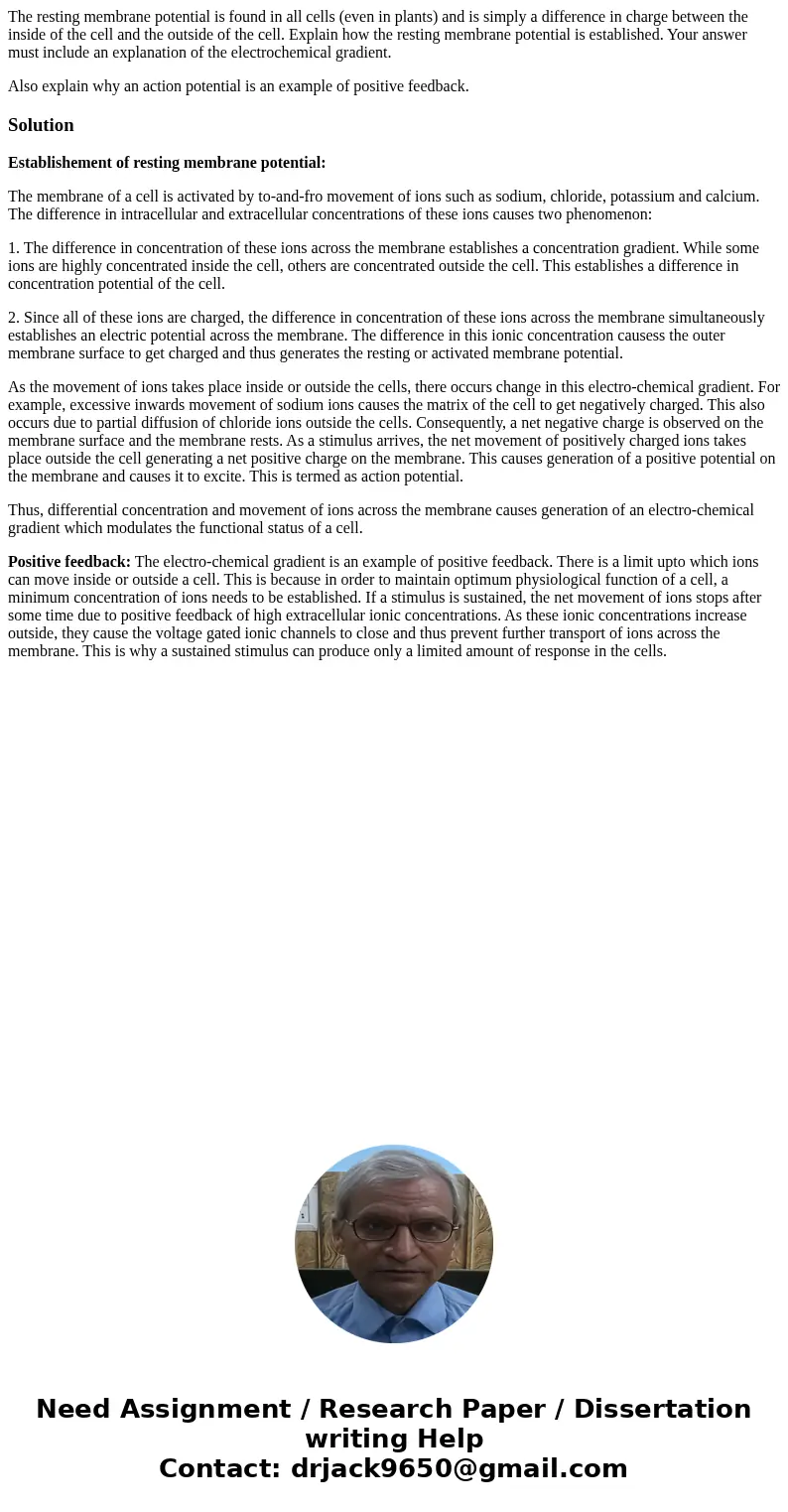The resting membrane potential is found in all cells even in
The resting membrane potential is found in all cells (even in plants) and is simply a difference in charge between the inside of the cell and the outside of the cell. Explain how the resting membrane potential is established. Your answer must include an explanation of the electrochemical gradient.
Also explain why an action potential is an example of positive feedback.
Solution
Establishement of resting membrane potential:
The membrane of a cell is activated by to-and-fro movement of ions such as sodium, chloride, potassium and calcium. The difference in intracellular and extracellular concentrations of these ions causes two phenomenon:
1. The difference in concentration of these ions across the membrane establishes a concentration gradient. While some ions are highly concentrated inside the cell, others are concentrated outside the cell. This establishes a difference in concentration potential of the cell.
2. Since all of these ions are charged, the difference in concentration of these ions across the membrane simultaneously establishes an electric potential across the membrane. The difference in this ionic concentration causess the outer membrane surface to get charged and thus generates the resting or activated membrane potential.
As the movement of ions takes place inside or outside the cells, there occurs change in this electro-chemical gradient. For example, excessive inwards movement of sodium ions causes the matrix of the cell to get negatively charged. This also occurs due to partial diffusion of chloride ions outside the cells. Consequently, a net negative charge is observed on the membrane surface and the membrane rests. As a stimulus arrives, the net movement of positively charged ions takes place outside the cell generating a net positive charge on the membrane. This causes generation of a positive potential on the membrane and causes it to excite. This is termed as action potential.
Thus, differential concentration and movement of ions across the membrane causes generation of an electro-chemical gradient which modulates the functional status of a cell.
Positive feedback: The electro-chemical gradient is an example of positive feedback. There is a limit upto which ions can move inside or outside a cell. This is because in order to maintain optimum physiological function of a cell, a minimum concentration of ions needs to be established. If a stimulus is sustained, the net movement of ions stops after some time due to positive feedback of high extracellular ionic concentrations. As these ionic concentrations increase outside, they cause the voltage gated ionic channels to close and thus prevent further transport of ions across the membrane. This is why a sustained stimulus can produce only a limited amount of response in the cells.

 Homework Sourse
Homework Sourse